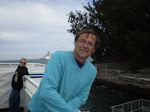As I said in my article,
The appeal of Engel’s model was its critique of biomedical reductionism. In his original paper, Engel talked about neutralizing “the dogmatism of biomedicine” (p. 135). He commented on the enormous investment in diagnostic and therapeutic technology that emphasizes “the impersonal and the mechanical” (p. 135). He quoted from Holman (1976), who argued that:
[T]he Medical establishment is not primarily engaged in the disinterested pursuit of knowledge and the translation of that knowledge into medical practice; rather in significant part it is engaged in special interest advocacy, pursuing and preserving social power (quoted on p. 135).
Engel acknowledged the interest in the biopsychosocial model amongst a minority of medical teachers, but also emphasized the difficulties in overcoming the power of the prevailing biomedical structure.
As Engel explained, “medicine's crisis derives from the same basic fault as psychiatry's” (p.129). By defining disease in terms of somatic parameters, physicians can make the incorrect inference that they "need not be concerned with psychosocial issues which lie outside medicine's responsibility and authority” (p.129). Medicine has tried to correct this imbalance over recent years by attempting to make its training and practice more patient-centred. It hasn’t always been very successful in this aim and medicine still needs to be rethought in the way suggested by Engel (see eg. post on my personal blog). Healthcare has corrupted its mission and still needs to change (see another post on my personal blog).
Historically there have been various culturally derived belief systems about illness and disease. It wasn't so long ago that people in the West still believed in humoural explanations of illness (see eg. previous post). As Engel pointed out, "the biomedical model is now the dominant folk model of disease in the Western world" (p.130). However, even within the West there is still much take up of alternative and complementary medicine. Nor have traditional indigenous views globally been completely colonised by biomedicine (see previous post).
The problem with trying to conceptualise mental health problems as physical disease is that it leads to polarised positions between biomedical reductionism and a stance which argues that ‘mental health problems should not be seen as illness’. Representatives of the latter view, which Engel called ‘exclusionist’, would be Thomas Szasz (see eg. previous post), Lucy Johnstone (see another previous post) and Peter Kinderman (see eg. yet another previous post). There have even been these Szaszian tendencies within the Critical Psychiatry Network (see eg. previous post).
As Engel said, “the reductionists are the true believers, the exclusionists are the apostates” (p.130). But, in fact, both biomedical reductionists and the Szaszian position are wrong, as illness is not so much a physical disease as a "person-centered, harmful, and undesirable deviation or discontinuity . . . associated with impairment or discomfort" (p.130 of Engel paper, quoting from Fabrega, 1975). A technical distinction is made in the literature between illness as an experience and disease as physical pathology. In these terms, mental illness should not be reduced to physical brain disease (see eg. my Lancet Psychiatry letter).
Illness is most frequently first identified by people having symptoms or noticing signs. Building on the dissection of the body in medieval Europe, the Cartesian view of disease as the breakdown of the bodily machine did not take an organismic view. This more wholistic viewpoint in fact tended to take an equally erroneous vitalist perspective (see eg. previous post). In the nineteenth century, the application of the anatomoclinical method, relating signs and symptoms to physical pathology, was remarkably successful. But as Engel said, "at a cost" (p.131). From his point of view, “We are now faced with the necessity and the challenge to broaden the approach to disease to include the psychosocial without sacrificing the enormous advantages of the biomedical approach” (p.131).
People may have underlying disease which hasn’t yet presented with symptoms and signs. Furthermore, patients need to be interviewed by doctors to understand their presentation. Broader socioeconomic conditions may well be important. Psychosocial factors determine even whether patients present to doctors. How patients react to treatment options can also affect outcome. The doctor-patient relationship itself is a powerful factor in treatment. All of these factors are outside a narrow biomedical framework which Engel called the “requirements of a new medical model” (p.131).
As Engel said, medicine has to “take into account the patient, the social context in which he lives, and the complementary system devised by society to deal with the disruptive effects of illness, that is, the physician role and the health care system” (p.132). The boundaries between health and disease are not absolute and both patients and doctors can have views about what counts as the sick role. It is patients and doctors, as far as possible together, that determine what should be regarded as illness/disease.


No comments:
Post a Comment